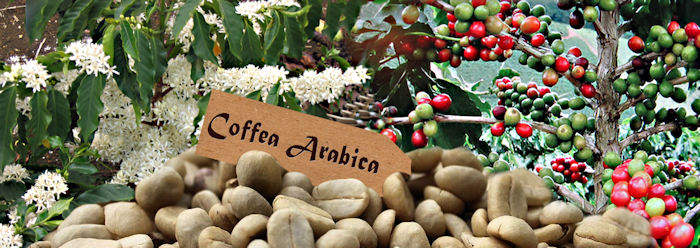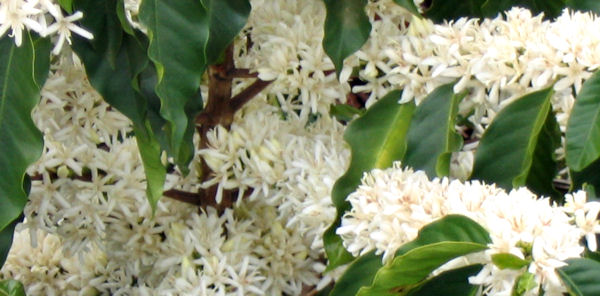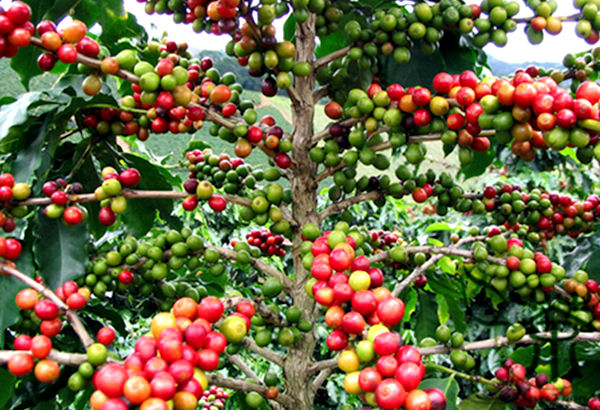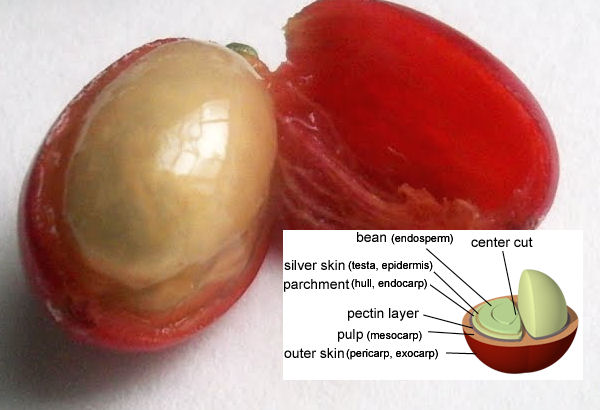
Coffea Arabica (Rubiaceae)
Coffea arabica is a species of Coffea originally indigenous to the forests of the southwestern highlands of Ethiopia, as also the mountainous regions of Yemen. It is also known as the “coffee shrub of Arabia”, “mountain coffee”, or “arabica coffee”. C. arabica is believed to be the first species of coffee to be cultivated.
[easingslider id=”1174″]
Wild plants grow between 9 and 12 m (29 and 39 ft) tall, and have an open branching system; the leaves are opposite, simple elliptic-ovate to oblong, 6–12 cm (2.4–4.8 in) long and 4–8 cm (1.6–3.2 in) broad, glossy dark green. The flowers are white, 10–15 mm in diameter and grow in axillary clusters. The seeds are contained in a drupe (though commonly called a “cherry” which contains 2 seeds which we call coffee beans.

C. arabica takes about seven years to mature fully, and does best with 1.0–1.5 meters (about 40–59 inches) of rain, evenly distributed throughout the year.[citation needed] It is usually cultivated between 1,300 and 1,500 m altitude, but plantations grow it as low as sea level and as high as 2,800 m.
The plant can tolerate low temperatures, but not frost, and does best with an average temperature between 15 and 24 °C (59 and 75 °F).[8] Commercial cultivars mostly only grow to about 5 m, and are frequently trimmed as low as 2 m to facilitate harvesting. Unlike Coffea canephora, C. arabica prefers to be grown in light shade.

Two to four years after planting, C. arabica produces small, white, highly fragrant flowers. The sweet fragrance resembles the sweet smell of jasmine flowers. Flowers opening on sunny days result in the greatest numbers of berries. This can be a curse, however, as coffee plants tend to produce too many berries; this can lead to an inferior harvest and even damage yield in the following years, as the plant favours the ripening of berries to the detriment of its own health.
On well-kept plantations, overflowering is prevented by pruning the tree. The flowers only last a few days, leaving behind only the thick, dark-green leaves. The berries then begin to appear. These are as dark green as the foliage, until they begin to ripen, at first to yellow and then light red and finally darkening to a glossy deep red. At this point they are called “cherry” and are ready for picking.

The berries are oblong and about 1 cm long. Inferior coffee results from picking them too early or too late, so many are picked by hand to be able to better select them, as they do not all ripen at the same time. They are sometimes shaken off the tree onto mats, which means ripe and unripe berries are collected together.

Each berry holds two locules containing the beans. The coffee beans are actually two seeds within the fruit; sometimes, a third seed or one seed, a peaberry, grows in the fruit at tips of the branches. These seeds are covered in two membranes; the outer one is called the “parchment coat” and the inner one is called the “silver skin”.
Gourmet coffees are almost exclusively high-quality mild varieties of arabica coffee, and among the finest arabica coffee beans in the world used for making espresso coffee are Jamaican Blue Mountain, Colombian Supremo, Tarrazú, Costa Rica, Guatemalan Antigua, and Ethiopian Sidamo.


